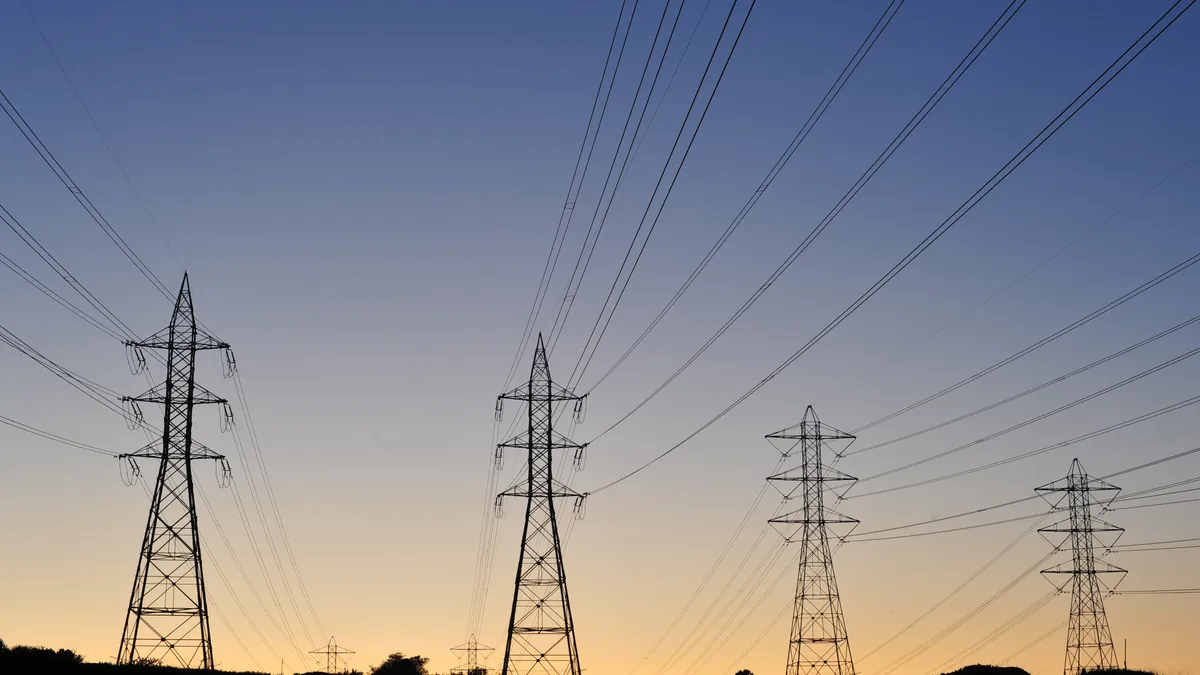Dive Brief:
- ISO New England has begun working to increase wholesale market participation of distributed energy resource (DER) aggregators, in response to the Federal Energy Regulatory Commission's Order 2222.
- New England officials launched the stakeholder process in December and will spend January and February holding discussions with entities directly affected by the new requirements. Compliance filings are due to FERC in July.
- According to Henry Yoshimura, the ISO's director of demand resource strategy, there are between 7,000 MW and 8,000 MW of distributed resources on the New England system already, out of a total resource base of around 34,000 MW.
Dive Insight:
New England utilities are already installing DERs on the grid and so the extent Order 2222's future impact on the region's resource mix is unclear. Still, officials say the process to comply with FERC's landmark order will involve virtually all of the region's stakeholders.
"The region is already implementing a lot of distributed energy resources," said Yoshimura. "We're accounting for them and many participate in the wholesale market currently. It's kind of hard to say what the incremental change [from Order 2222] will be."
According to Yoshimura, ISO-NE DERs are largely split between energy efficiency and solar generation, with efficiency being the slightly larger resource when considering the lower capacity factor of solar generation resources.
DERs are "already a pretty sizable chunk of the resources and capacity we have on our system, so it's not clear to me how much more we will get as a result of implementing 2222," Yoshimura said.
New England's plan to allow DER aggregation calls for a high-level approach to be reviewed by the NEPOOL Technical Committees beginning in February followed by a more-detailed plan to be reviewed starting in March. Discussions will continue in April and May, with the technical committee voting on tariff changes in early June and the participants committee voting later that month. A compliance filing must be made with FERC by July 19.
Discussions will involve all of the region's stakeholders, including DER aggregators, state regulators, municipal utility boards and distribution utilities, said Yoshimura. While New England already has a large contingent of distributed resources on the grid, bringing aggregators, distribution utilities and their regulators, under New England's market rules will still be complicated.
ISO-NE will need to register DER aggregators "in a manner that accommodates the physical and operational characteristics" of the resources, allows aggregation of multiple technology types, prohibits the double counting of services and establishes a minimum size requirement for aggregations that cannot exceed 100 kW, according to a Dec. 8 presentation.
"We're all struggling to figure out how to best coordinate the registration and operation of DER which are in a distribution system," Yoshimura said. There are areas of the region's electric system that have traditionally not been in the purview of an ISO, he added, and thus require "close coordination with other entities such as distribution utilities and their regulators."
Some of the more complicated issues will involve coordinating the dispatch of these resources, though Yoshimura said it is not expected to be contentious. The ISO has not historically modeled distribution systems, instead taking its analysis only down to the substation-level. Reliability from the substation to consumer is typically overseen by a distribution utility and is subject to state regulation.
"The thing we have to do that we have not done to date is coordinate resources in that distribution system while still achieving economy and reliability," he said. "We obviously don't want to dispatch resources such that it compromises safety and reliability."
The ISO is now collecting comments from stakeholders and will review them to determine the next steps. An announcement on the those next steps is expected in January.
"That coordination will be critical, and we haven't had to do that because traditionally power flowed from the bulk system to distribution system and not the other way," Yoshimura said. "That's a challenge."
"We've never had to coordinate the dispatch of resources with a distribution utility and a state regulator that might have an interest in how we're doing that," he said. But "once a resource participates in our market and is subject to ISO dispatch control, such coordination becomes necessary."














